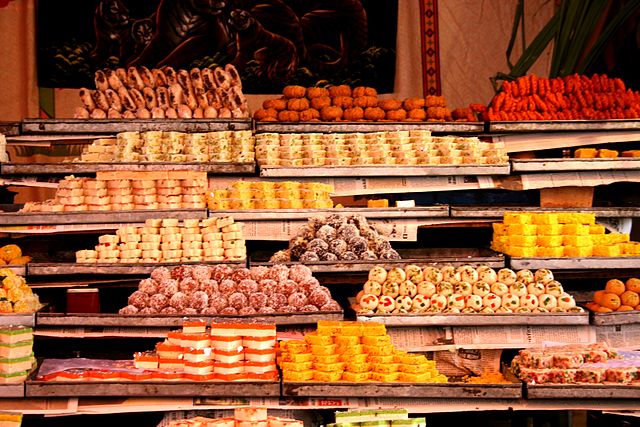Ghantewala: Why did Delhi’s ‘oldest sweet shop’ shut down?
When the Ghantewala sweet shop was set up in 1790, George Washington was the US president, Mozart was performing in Vienna, France was in the grip of the French Revolution, Britain was ruled by King George III and Shah Alam II was the Mughal emperor who ruled Delhi.
It was at the time of such momentous world events that Lala Sukh Lal Jain, a small-time sweet maker from Rajasthan, arrived in Delhi (India) to earn a living.
He started by selling the sweets, arranged on a brass plate, from street to street. As his popularity and sales grew, Jain graduated to a pushcart and by 1790, his business had grown so much that he could open up a large shop in the bustling Chandni Chowk market.
From the beginning, Ghantewala’s most popular sweet has been Sohan Halwa. It was the favourite of Mughal emperors, India’s presidents and prime ministers and the residents of Delhi.
During the annual Hindu festival of Diwali, the shop owners would have to call the police to manage the long queues of customers that would form outside from early in the morning.
Today, however, the customers are all gone and the once thriving shop wears a deserted look. A peek into the shop reveals all – the floor is covered in dust and there are cardboard boxes and disposable plates strewn about, and not a single sweet is in sight.
In recent months, the shop has been facing legal problems and licensing issues. Moreover, the city’s changing tastes have led Sushant Jain, the current owner and scion of the Jain family, to make the tough decision to shut the shop.
Said Jain,
“People nowadays are reluctant to buy Indian sweets and traditional snacks, they now prefer chocolates and pastries.”
In addition, Sohan Halwa – the melt-in-the-mouth hard, crisp, disk-shaped sweet made from refined wheat flour, sugar, almonds, pistachios and dollops of pure ghee (clarified butter) – has fallen out of favour in a country that has a growing cholesterol problem and where more than 63 million people suffer from diabetes.
Jain admitted that by closing shop, he felt like had done something wrong and was “letting down my forefathers”. But with business consistently declining, he was left with little choice but to bring the curtains down on Ghantewala.
And so, Ghantewala falls victim to the modern times and becomes a lost slice of the city’s heritage.
(All images - credit: Wikimedia Commons under Creative Commons licence)


















Comments